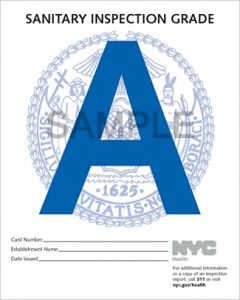I’ve long been a fan of posting restaurant inspection scores, grades, happy faces, whatever. The philosophy I subscribe to is that the inspection work is done with public money and the public should have access to the results. Whether the info is posted on the door, or a website, it should be accessible.
For a while lots of folks have wondered whether the posting matters, public health wise. I want to believe it does, but I’m still not sure.
The biggest issue in real life experimentation and hypotheses is that there are lots of other factors that could lead to an outcome. And if the outcome you’re looking for is reduction in Salmonella illnesses, you likely can find it if you look. Like Melanie Firestone and Craig Hedberg did in their EID paper that was released this week.
But I’m not convinced that less Salmonella was a result posting grades alone. And I don’t think they are either, since Firestone and Hedberg highlight the other factors in their limitations:
First, this was a quasiexperimental, ecologic study that represents an association and not a causal relationship. Second, the NYC restaurant letter grade program involved multiple changes to sanitation enforcement in addition to letter grade posting; changes included inspection frequency, greater risk for fines, improvements to online resources, and additional training opportunities.. As a result, we could not determine which factors contributed the most to the reduction in Salmonella infections.
It’s good stuff, we need more data on these things. Posting grades is good, and absolutely should be done. So is increasing consequences and oversight – but how much each factor matters is still unknown. And what about other pathogens like norovirus and pathogenic E. coli?
